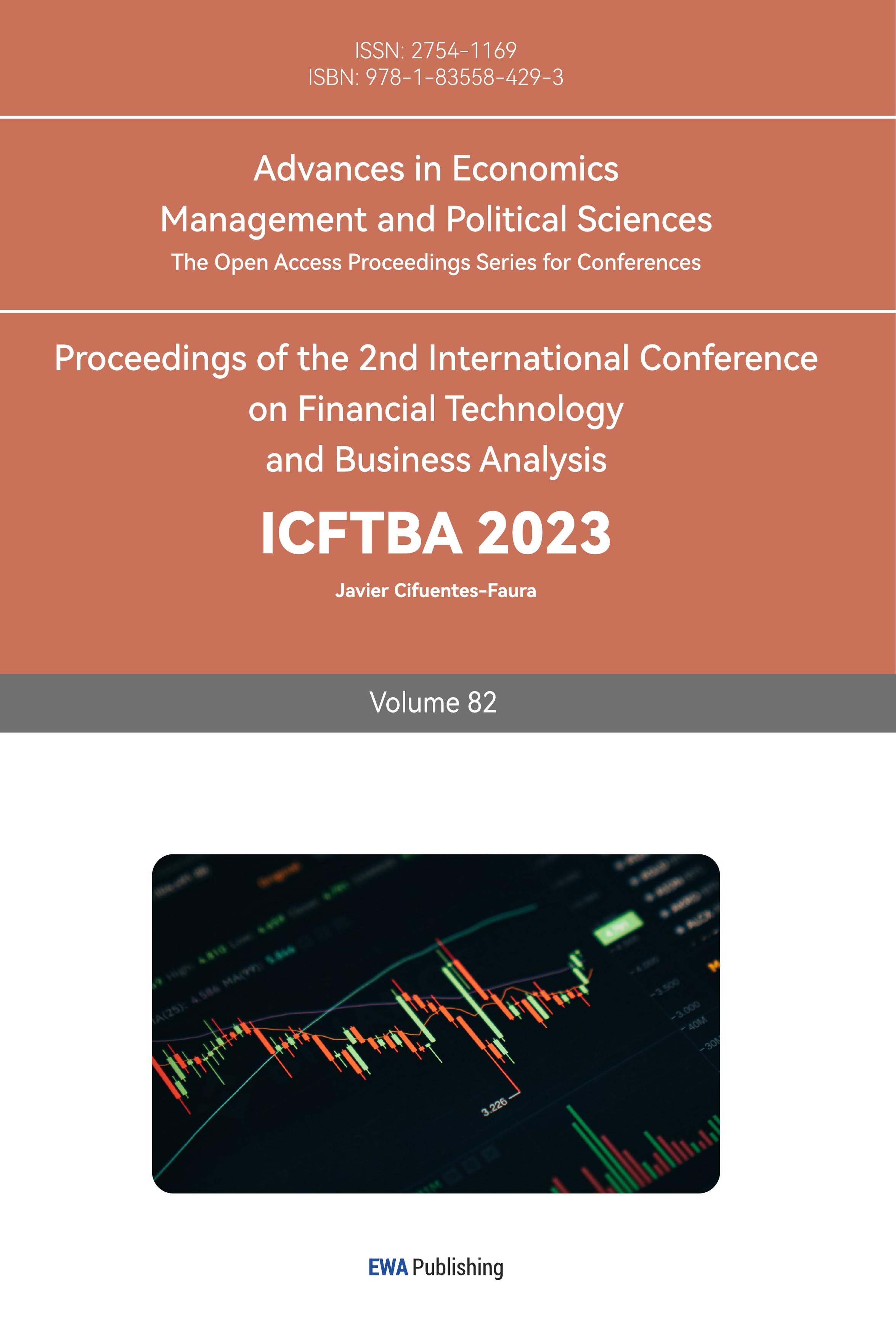1. Introduction
In the dynamic landscape of professional soccer, comprehending the factors that wield influence over player market value stands as a crucial pursuit for clubs, agents, and analysts alike [1]. This inquiry centers around elucidating the multifaceted elements that contribute to the fluctuations in player market values across different positions [2]. At the heart of this study lies the fundamental research query: What are the underlying determinants that shape player market value across diverse positions within European Leagues? By meticulously dissecting player data encompassing various positions, leagues, and age groups, this investigation aims to pinpoint the pivotal factors that exert significant influence on market value shifts.
This research delves deeply into the intricate interplay between player positions and their corresponding market values within the European Leagues. Through an intricate examination of the relationships linking player attributes, age, and league affiliation, this study seeks to unravel the nuanced drivers behind the ebbs and flows of market values. The exploration of these dimensions holds the potential to furnish invaluable insights for decision-makers within the soccer ecosystem.
The structure of this report unfolds as follows: The subsequent section delineates the methodology employed in this study, detailing data sources, preprocessing techniques, and analytical models employed [3]. Following that, the primary findings are succinctly discussed, reinforcing the research problem and objectives. The report culminates by scrutinizing the implications arising from the study's contributions and outlining potential avenues for future research. This includes the incorporation of recent years' data and the identification of new factors, aiming to unearth novel discoveries.
2. Methodology
The dataset harnessed in this study is sourced from reputable origins and meticulously curated for rigorous analysis. Our selection of surveyed factors is guided by the following rationales: Age, a pivotal variable reflecting a player's career stage, and potential market value fluctuations. Nationality impacts a player's market value due to varying market appeal across different regions. League affiliation is a significant indicator of a player's skill level and market value. Physical attributes like height and weight are indicative of fitness and technical prowess, thus impacting market value. Club performance metrics, encompassing goals, assists, starts, and clearances, serve as key indicators of a player's in-game performance and influence market value. Furthermore, injuries can disrupt performance and playing time, ultimately affecting market value.
To unveil the determinants of player market value, a comprehensive analytical approach involving various statistical techniques and methodologies is crucial. The core analytical tools encompassed in this study include Simple and Multiple Regression analyses, ANOVA tests, and T-tests. However, our study predominantly focuses on employing Simple and Multiple Regression analyses, ANOVA tests, and T-tests, aligned with our dataset.
Initially, we aim to estimate the alteration in one or more dependent variables as independent variables vary. Simple linear regression and multiple linear regression play a pivotal role in exploring the relationships between two or more variables. For instance, we investigate whether a positive causal relationship exists between a player's goal-shooting performance and their market value, considering the consensus that an increase in goals leads to a significant rise in market value.
Moreover, the ANOVA Test proves valuable in assessing the statistical significance of differences between groups. In our analysis, categorical variables such as the various leagues (Premier League, Serie A, Bundesliga, etc.) are compared, making ANOVA an apt choice to analyze variance levels within groups across samples.
The T-test is leveraged to compare means between two distinct player categories: local and non-local. Our dataset differentiates these groups, enabling us to determine whether there exists a statistically significant variance in market values based on player locality within a given league. The T-test is thus essential for conducting this comparative analysis.
Following a comprehensive regression analysis involving X observations to uncover and quantify variable relationships, key evaluation metrics are outlined for interpreting and assessing results.
2.1. P-Value and Significance
A primary assessment criterion in our analysis is the P value. As indicated by the summary output, the calculated P value consistently falls below the conventional threshold of 0.05. This significant observation suggests a meaningful relationship within the data, indicating that the observed relationship is unlikely to be due to chance alone.
2.2. R-squared Value and Variability
The computation of the R-squared value, a critical metric, gauges the extent to which the independent variable explains variance in the dependent variable. This underscores the independent variable's robust predictive capacity for observed data variations.
2.3. F-test for Overall Significance
To assess the overall significance of our regression model, the F-test is employed. The remarkably low p-value associated with the F-test, significantly below the conventional threshold of 0.05, underscores the implausibility of the observed F-score occurring under a null model. This underscores the meaningful relationship demonstrated by our regression model.
2.4. Visualization Using Ggplot2
In tandem with the aforementioned statistical metrics, the ggplot2 library in the R programming language is employed to craft insightful visualizations. These visual representations in Figure Cally portray relationships and trends uncovered via regression analysis, offering an intuitive means of conveying complex variable interplay.
Building upon the aforementioned statistical methods and evaluation metrics, we arrive at the following result.
3. Data Analysis
The study selected a total of 400 players from UEFA First Tier leagues and analyzed them into 4 main positions: Forward, Midfielder, Defender, and Goalkeeper, with each of 100 elite players from the highest market value to the 100th from transfermarket.com rank. The data set also includes information from fbref.com. 13 influential factors were determined and analyzed through four different data analyze models: simple regression, multiple regression, T-test, and ANOVA test (see Table 1).
Table 1: Classification of factors of evaluation
No | Category | Factors | Definition |
1 | Simple Regression | Age | Age in 22/23 season |
2 | League (include ANOVA test) | League Rank 22/23 | |
3 | Goal (Forwards Only) | Player goals in season 22/23 | |
4 | Assist (Midfielders Only) | Player assists in season 22/23 | |
5 | Interception (Defenders Only) | Player Interception in season 22/23 | |
6 | Clearance (Defenders Only) | Player Clearance in season 22/23 | |
7 | Save Rate (Goalkeepers Only) | Player Save Rage in season 22/23 | |
8 | Multiple Regression | Height | meter |
9 | Appearance | Numbers of competition appearance | |
10 | Starter | Numbers of competition starter | |
11 | Goal (Midfielders Only) | Numbers of goal by midfielders | |
12 | Assist (Forwards Only) | Number of assists by forwards | |
13 | T-test | Local League | 0 represent foreign players; 1 represent domestic players |
Table 2: UEFA First Tier League Market Value Rank
No | Rank | Competition | Country |
1 | 1 | Premier League | England |
2 | 2 | La Liga | Spain |
3 | 3 | Serie A | Italy |
4 | 4 | Bundesliga | Germany |
5 | 5 | Ligue 1 | France |
6 | 6 | Liga Portugal | Portugal |
7 | 7 | Super Lig | Turkey |
8 | 8 | Eredivisie | Netherland |
9 | 10 | Jupiler Pro League | Belgium |
10 | 16 | Super Sport HNL | Croatia |
In this analysis, the influence factors of soccer players' market value from the hypothesis were taken as the correlation variables to compare with the market value.
4. Results
Comparison of Elite UEFA League Players Market Value with Dependent Influence Factors. In the regression analysis model, different colors of the regression line represent different positions: Blue is Forward, Red is Midfielder, Purple is Defender, and Orange is Goalkeeper.
4.1. Forwards Single Regression Model
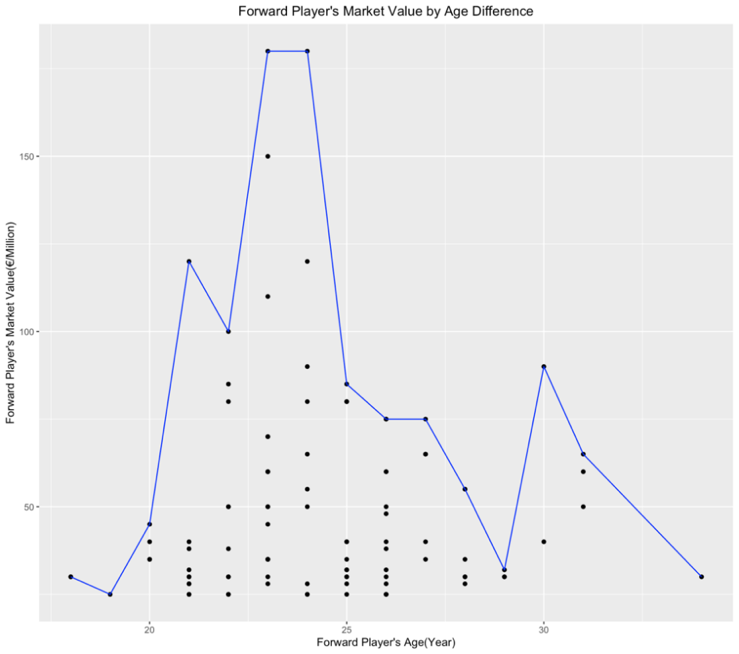
Figure 1: Forward Player’s Market Value by Age Difference
We can see through Figure 1 that there’s a significant increase in forwards market value during 20-23 years old then keeps constant till age 25, and then decrease until nearly 30 years old, then there’s a secondary peak occur during age 30-33 as some elder players become the captain or core of the team. Compare with the research conducted by Dendir Seife in 2016, that the average professional soccer player peaks between the ages of 25 and 27, usually average forward players peak is 25, defenders are 27 [4]. Our research shows a similar result that the forward players’ market value is more likely to reach the highest during 20 to 25 years old.

Figure 2: Forward Player’s Market Value by Different League
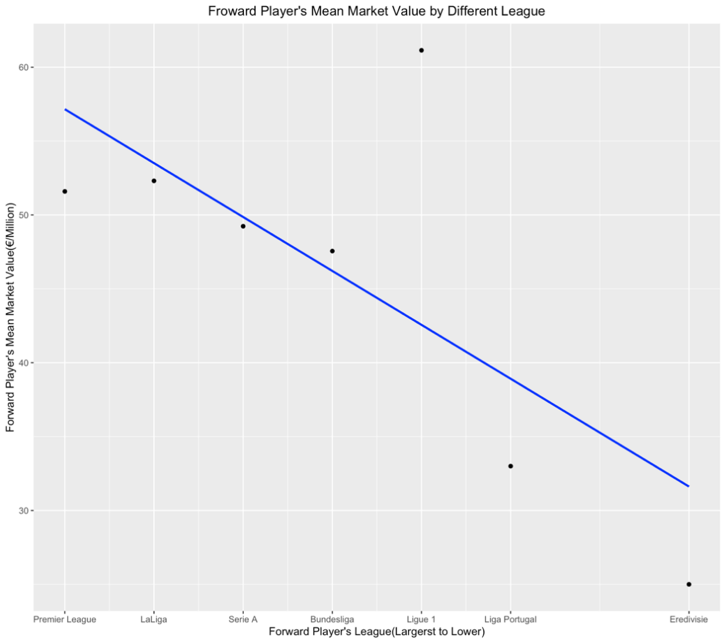
Figure 3: Forward Player’s Mean Market Value by Different League
Compared to Figure 2. By finding the Mean Values (see Figure 3.) of each league, the regression model can be analyzed as a decreasing mode with the league rank decrease. One thing to note is about Ligue 1 is the mean value Figure 3, Ligue 1 is higher than average because there are outlier players such as Kylian Mbappe, with a superhigh market value, pulls up the mean value of Ligue 1 since there are fewer Ligue 1 players in the Forward 100 data set.
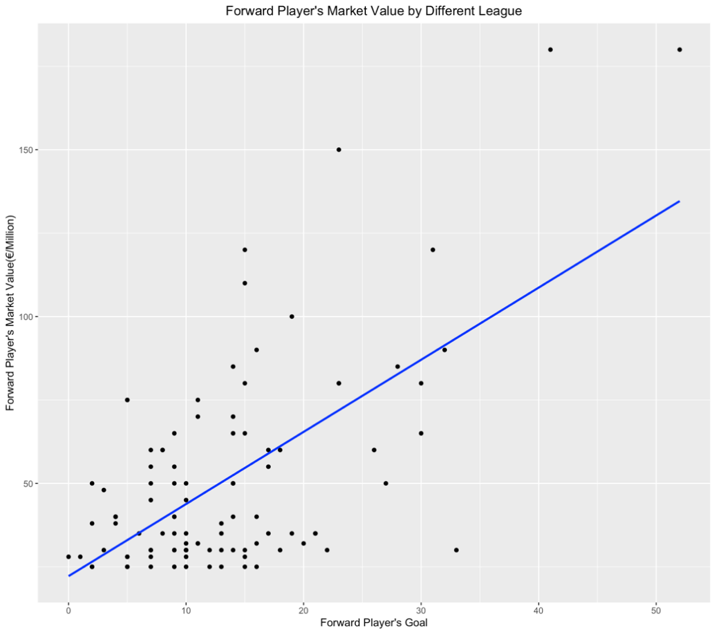
Figure 4: Forward Player’s Market Value by Numbers of Goals
The data distribution in the increase regression model (see Figure 4.) shows the strong relationship between Goals Forwards and their market value. Forward Player’s Goal numbers are the most important factors that influence their market value. This connects to research that calculates and uses an economic model that goal scored and assists are the most important influences on the market value of forward [5].
4.2. Forward Players T-test
In this study, the dataset marked includes players' relationship with the leagues they play in. 1 represents players who play in the country’s league, the same as their nationality. 0 represents players' nationality that does not belong to the league’s country they stay in. After analyzing the forward data through a t-test, the result shows that p-value = 0.623, which is much greater than 0.05, and there is no impact on this group of data. The mean of x (53.13793) and mean of y (49.53521) also are similar to each other. Thus, the nationalities don’t have an impact on the first-tier European soccer forwards.
4.3. Forward Player’s Multiple Regression Analysis
The Forward Multiple Regression analysis includes Height, Assist, Appearance, and Starter. The height of the player is connected with the player's market value in a relatively small percentage because 0.0521 is greater and 0.05 a little bit. However, assists are a main influence besides goals on the player market value influence that 0.0213 is way smaller than 0.05. According to a study done by a Spain University sports science research group, forward height is considered an influence variable on a player’s market value.
4.4. Midfielders Single Regression model

Figure 5: Midfielder Player’s Market Value by Age Difference
We can see through Figure 5 that midfielder players’ market value is more likely to reach the highest from 20 to 28 years old. Midfielders have a longer time period compared to forwards with a relatively high market value. Conductive research provides the estimate age peak of midfielders occurring in 25-27 [4]. Which are similar to this study’s data set.
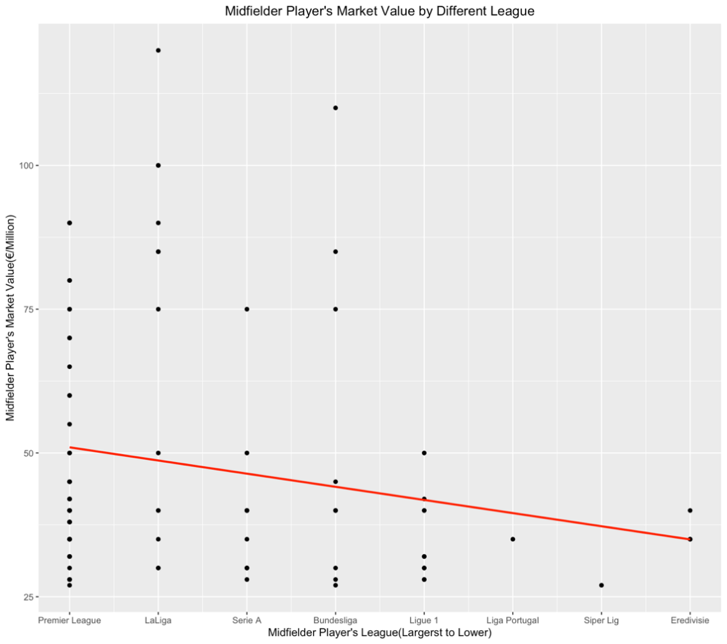
Figure 6: Midfielder Player’s Market Value by Different League
The study shows the elite 100 midfielders distributed in plot form Figure 6. Compared to Forwards, the Midfielder's data distribution is more likely to be seen in a decreasing regression model with the league rank decrease. Midfielders’ market value is higher than the league market value rank.
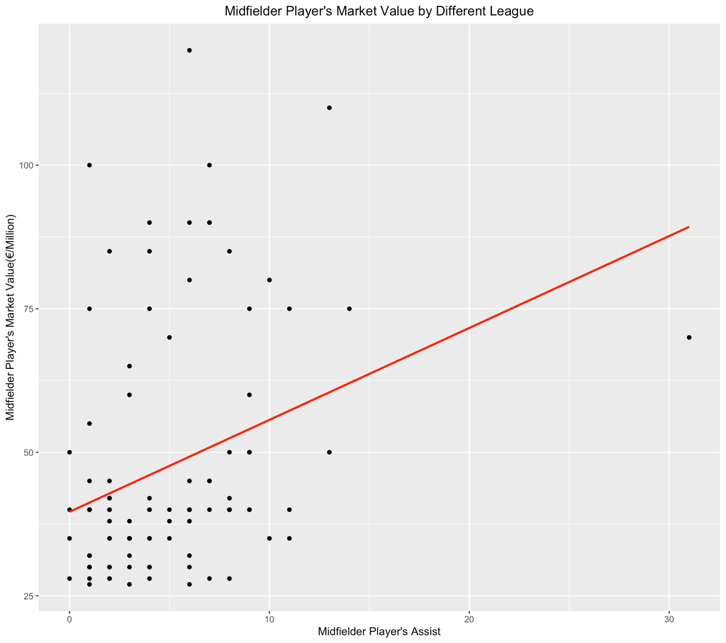
Figure 7: Midfielder Player’s Market Value by Numbers of Assist
The data distribution in the increase regression model (see Figure 7.) shows the strong correlation between Assists Midfield players and their market value. Midfield Player’s Assist numbers are the most important factors influencing their market value. Conductive research illustrated the number of assists is the most important factor in the midfielder player transfer, which is linked with the player market value [6].
4.5. Midfield Player’s Multiple Regression Analysis:
The analysis variables, including Height, Goals, Appearance, and Starter, from the multiple regression test, only appearance for midfielder 0.0886 > 0.05 have a small connection between their market value besides the strongest assists connection.
4.6. Defenders Single Regression Analysis
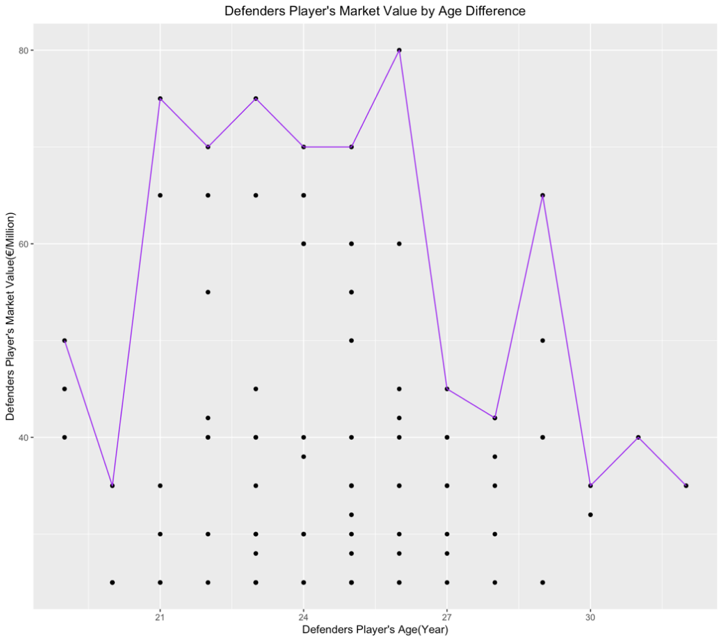
Figure 8: Defenders Player’s Market Value by Age Difference
We can see through Figure 8 that defenders’ market value is more likely to reach the highest from 21 to 26 years old. Defenders have a longer time period compared to forwards and midfielders in a relatively high market value. Research done in 2019, which also examined using ANOVA and simple regression analysis shows that goalkeepers' and defenders' career peaks are later than forwards usually last until 31 years old [7].
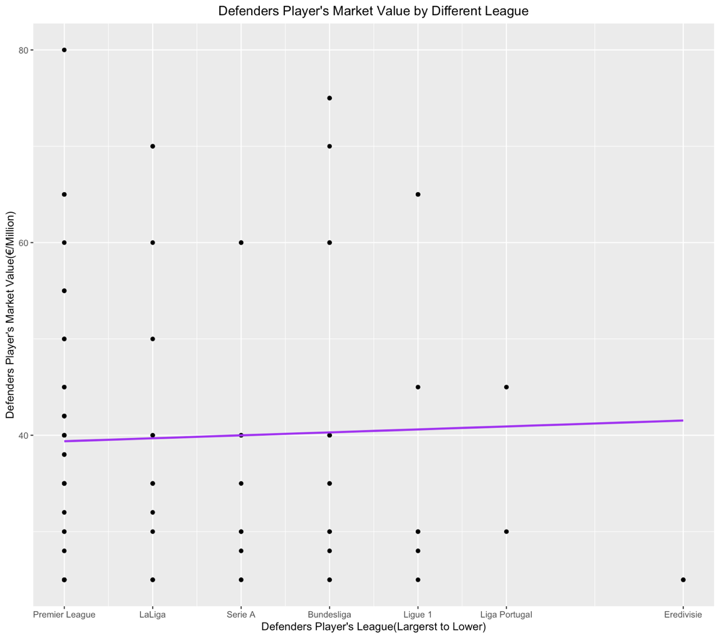
Figure 9: Defenders Player’s Market Value by Different League
The study only showed the elite 100 defenders and distributed in plot form Figure 9, didn’t cover all range of players. Since there is less visualization on data quantity and data distribution, which caused limitations in finding Leagues' influence on player market value.
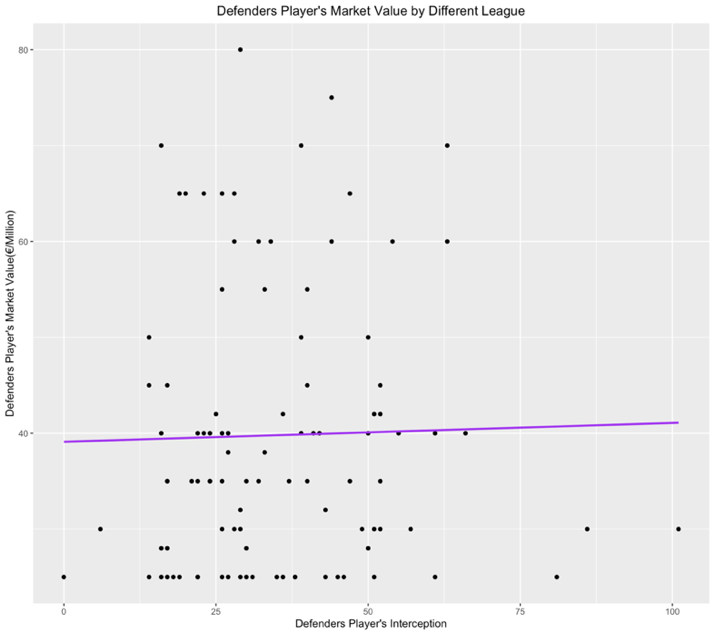
Figure 10: Defenders Player’s Market Value by Numbers of Interception
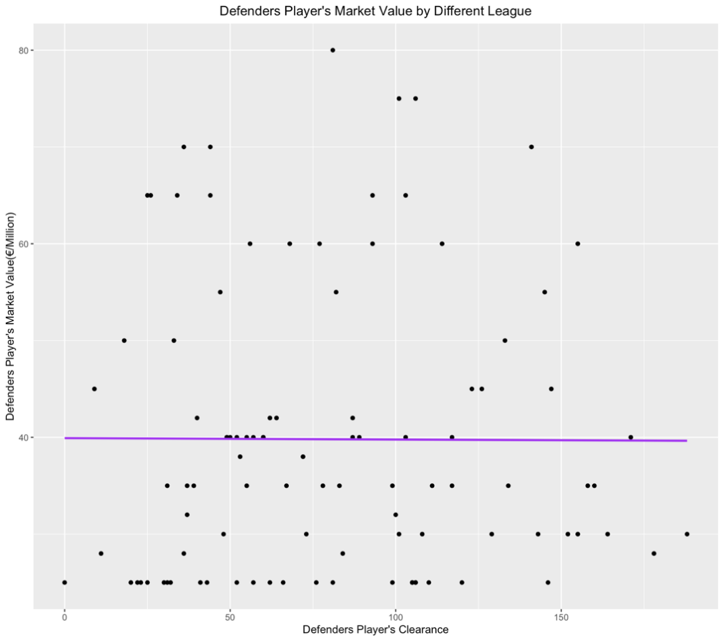
Figure 11: Defenders Player’s Market Value by Numbers of Clearance
There’s no straight conduction between player market value with player interception and clearance (see Figure 10 and Figure 11.). Due to our research limitations and lack of data. For further research, defender’s body rival and speed scores from FIFA will be helpful in analyzing the influential factors on defenders.
4.7. Defenders Multiple Regression Analysis
The Multiple regression analysis includes Height, Appearance, and Starter. The result for defenders didn’t show anything as an important factor influencing the player's market value.
4.8. Goalkeepers Single Regression Analysis

Figure 12: Goalkeepers Player’s Market Value by Age Difference
We can see through Figure 12 that goalkeeper players’ market value is more likely to reach the highest after 20 years old all the way until past 30 years old. Goalkeepers have a longer time period compared to other positions in the soccer field with a relatively high market value. A study on different position players' age peaks shows that goalkeepers have a longer age of market value, usually lasting until 31 years old [6].
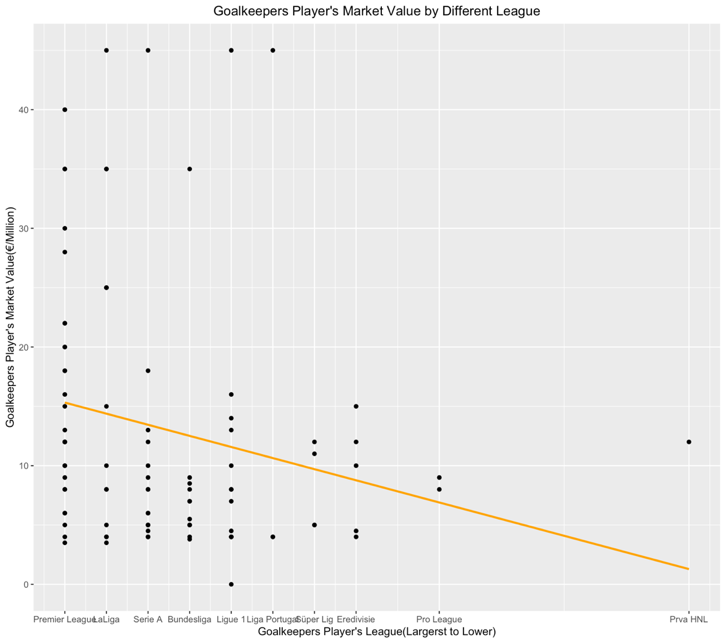
Figure 13: Goalkeepers Player’s Market Value by Different League
The study shows the elite 100 goalkeepers distributed in plot form Figure 13. Compared to other positions in the soccer field, goalkeepers’ data distribution is more likely to be seen in a decreasing regression model with the league's rank decrease. Goalkeepers’ market value is higher with higher the league market value. Also, there are superhigh market value players in the top UEFA leagues on average.

Figure 14: Goalkeepers Player’s Market Value by Save Rate
Due to the data limitation, we can see from Figure 14 that the top 100 goalkeepers would have relatively average save rates and constant appearance times. This simple regression test didn’t work so well, and it’ll be better if there are more kinds of data that can cover the part and do the regression analysis.
4.9. Goalkeepers Multiple Regression Analysis
The Multiple regression analysis includes Height, Appearance, and Starter. However, the result is all way greater than 0.05, which means there’s not much relationship. Only height is a possible influence factor on goalkeepers’ player market value. Due to the comparison with other variables, height (0.217) is the closest to 0.05.
5. Discussion
By looking at the reference, the paper can gain support from some previous research with a similar investigation on factors that may impact the player’s market value. The paper also examines some other factors that are either non-quantifiable or unavailable.
1. Performance:
According to Bhilawa [8], players with good performance are more interested in many clubs at a young age, so these players have a high market value.
Technical skills, like dribbling, passing, shooting, and defending, greatly influence a player's value.
Consistency: Players who deliver strong performances over several seasons are frequently paid more.
Statistics: A player's value is influenced by goals, assists, clean sheets (for goalkeepers), and other performance indicators.
2. Age:
As mentioned, players with good performance are more interested in many clubs at a young age, so these players have a high market value [9].
Young talents: Due to their potential for future growth and longer career trajectories, younger players with strong promise are frequently evaluated more highly.
Prime age: Due to a balance between experience and physical prowess, players in their prime, usually between the ages of 24 and 30, are highly appreciated [10].
3. Market Demand:
Scarcity: Players in positions with high demand and limited supply, such as elite central defenders or top strikers, frequently command higher fees.
4. Reputation and Brand:
International profile: Players with successful national teams or those participating in prestigious international competitions frequently command higher market prices [9].
Social media presence: A player's marketability can be improved, and sponsorship opportunities can be brought to them if they have a large social media following [11].
5. Injury History:
Players with frequent injuries might have lower valuations since their fitness and availability might be considered larger risks.
6. Transfer History:
Transfer fees: A player's past high transfer fees reveal their value to their prior teams, affecting their current value.
6. Limitations
The result after analysis showed certain limitations. This data analysis showed some limitations. The study has four main limitations.
6.1. The Scope of the Dataset
This study chooses to do the top 100 players from each of the four main positions in the European league, excluding the second-tier league. It creates some extraordinarily high outlier that does not fit into the trend well. Examples can be players like Kylian Mbappe. This is when his market value is ranked number 2 in strikers, but the average market value of Ligue 1 is significantly lower. The difference in market value between each of the players is insignificant. Therefore, the trend for some of the Figures is not that obvious. A wide set of data should be used to clarify the linear regression line. This cannot be achieved due to the limitation of our time for conducting the study. In future studies, data can be chosen in a difference of 5.
6.2. Not Adequate Factors
When conducting this study, we only choose some of the major factors affecting a player’s market value. However, factors specifically related to performance are not considered in this study. For strikers, expected goals, shots, and shots on target are not analyzed. For midfielders, total passes, including short, medium, and long passes completed and expected assists. For defenders, total tackles, and blocks. For goalkeepers passing. Other external factors may include transfer fees, etc. Only the factors listed above cannot fully explain the importance of each factor in determining the player’s market value.
6.3. No Specific Position, but General Positions
In this study, we categorized soccer athletes into four main groups. However, each main position has a specific position. Defenders include a center back, left back, and right back. Midfielders include defensive midfield, center midfield, and attacking midfield. Strikers include center forward, wingers, and second strikers. All roles on the pitch have different responsibilities that require different factors to assess which one impacts a player the most. For example, an attacking midfielder is more responsible for attacking, like scoring goals and assisting, and a defensive midfielder is more responsible for defensive action. According to the study categorization, these two positions are all under midfielders and the same after the data analysis.
6.4. Other External Factors
Many non-quantifiable factors are not counted in the data analysis because they are non-quantifiable or unavailable. Another reason is the restriction on the completion of this paper.
7. Conclusion
To conclude, this research furnishes a comprehensive analysis of player market value dynamics within European Leagues across diverse positions. Robust statistical methodologies illuminate intricate trends and correlations that shape the market landscape. Age emerges as a pivotal factor, with players aged 20-24 witnessing value growth followed by a decline from 24-28, accentuating the significance of timing in player transactions. The influence of league affiliation on market value underscores the multifaceted nature of valuation. Mean value analysis enhances clarity by spotlighting pronounced changes and trends. Goal and assist performance significantly determine forwards' market value, while midfielders' peak years and assists notably contribute to valuation. Goalkeepers exhibit distinctive trajectories, with ages 20-33 showcasing consistent value appreciation. These insights empower stakeholders to make informed decisions, shape player management strategies, and navigate the intricacies of the soccer market with finesse [12].
References
[1]. Gibson, H. J. (1998). Sport Tourism: A Critical Analysis of Research. Sport Management Review, 1(1), 45–76. https://doi.org/10.1016/s1441-3523(98)70099-3
[2]. Alhdad, T. H. A., Gavrilović, P., & Životić, D. (2020). ECONOMIC EFFECTS OF INJURIES IN ELITE SOCCER PLAYERS WITH REGARD TO ANKLE INJURY. Facta Universitatis, Series: Physical Education and Sport, (1), 083. https://doi.org/10.22190/fupes190918008a
[3]. Tuv, E., & Runger, G. (2003). Pre-processing of high-dimensional categorical predictors in classification settings. Applied Artificial Intelligence, 17(5-6), 419–429. https://doi.org/10.1080/713827172
[4]. Dendir, S. (2016). When do soccer players peak? A note. Journal of Sports Analytics, 2(2), 89–105. https://doi.org/10.3233/jsa-160021
[5]. Majewski, S. (2016). Identification of Factors Determining Market Value of the Most Valuable Football Players. Journal of Management and Business Administration. Central Europe, 24(3), 91–104. https://doi.org/10.7206/jmba.ce.2450-7814.177
[6]. Miguel da Silva Brito Pacheco, F. (2022). The Impact of Performance Measures in Football Players’ Transfer Market Value. Run Repositorio Universidade Nova.
[7]. Kalén, A., Rey, E., de Rellán-Guerra, A. S., & Lago-Peñas, C. (2019). Are Soccer Players Older Now Than Before? Aging Trends and Market Value in the Last Three Decades of the UEFA Champions League. Frontiers in Psychology, 10. https://doi.org/10.3389/fpsyg.2019.00076
[8]. Bhilawa, L. (2022). THE INFLUENCE OF PERFORMANCE, AGE, AND NATIONALITY ON THE MARKET VALUE OF FOOTBALL PLAYERS. Jurnal Akuntansi Dan Pendidikan.
[9]. Sánchez, M. (2022). Factors associated to the market value of professional soccer players. Cuadernos de Psicologia Del Deporte.
[10]. Margareta, L. (2022). The Effect of Performance, Age, Transfer Fee and Salary to the Market Value of Professional Players (Empirical Studies in European Leagues Football Clubs). International Journal of Global Operations Research.
[11]. Evans, D., & Norcliffe, G. (2016). Local identities in a global game: the social production of football space in Liverpool. Journal of Sport & Tourism, 20(3-4), 217–232. https://doi.org/10.1080/14775085.2016.1231621
[12]. DiBlasi, L. (2022). Footballer Valuations: Valuing World-Class Football Players Against Transfer Fees. Retrieved from Google Scholar website: digitalcommons.bryant.edu
Cite this article
Rong,Z.;Wang,L.;Xie,S. (2024). Factors that Influence Player Market Value in Different Position: Evidence from European Leagues. Advances in Economics, Management and Political Sciences,82,50-63.
Data availability
The datasets used and/or analyzed during the current study will be available from the authors upon reasonable request.
Disclaimer/Publisher's Note
The statements, opinions and data contained in all publications are solely those of the individual author(s) and contributor(s) and not of EWA Publishing and/or the editor(s). EWA Publishing and/or the editor(s) disclaim responsibility for any injury to people or property resulting from any ideas, methods, instructions or products referred to in the content.
About volume
Volume title: Proceedings of the 2nd International Conference on Financial Technology and Business Analysis
© 2024 by the author(s). Licensee EWA Publishing, Oxford, UK. This article is an open access article distributed under the terms and
conditions of the Creative Commons Attribution (CC BY) license. Authors who
publish this series agree to the following terms:
1. Authors retain copyright and grant the series right of first publication with the work simultaneously licensed under a Creative Commons
Attribution License that allows others to share the work with an acknowledgment of the work's authorship and initial publication in this
series.
2. Authors are able to enter into separate, additional contractual arrangements for the non-exclusive distribution of the series's published
version of the work (e.g., post it to an institutional repository or publish it in a book), with an acknowledgment of its initial
publication in this series.
3. Authors are permitted and encouraged to post their work online (e.g., in institutional repositories or on their website) prior to and
during the submission process, as it can lead to productive exchanges, as well as earlier and greater citation of published work (See
Open access policy for details).
References
[1]. Gibson, H. J. (1998). Sport Tourism: A Critical Analysis of Research. Sport Management Review, 1(1), 45–76. https://doi.org/10.1016/s1441-3523(98)70099-3
[2]. Alhdad, T. H. A., Gavrilović, P., & Životić, D. (2020). ECONOMIC EFFECTS OF INJURIES IN ELITE SOCCER PLAYERS WITH REGARD TO ANKLE INJURY. Facta Universitatis, Series: Physical Education and Sport, (1), 083. https://doi.org/10.22190/fupes190918008a
[3]. Tuv, E., & Runger, G. (2003). Pre-processing of high-dimensional categorical predictors in classification settings. Applied Artificial Intelligence, 17(5-6), 419–429. https://doi.org/10.1080/713827172
[4]. Dendir, S. (2016). When do soccer players peak? A note. Journal of Sports Analytics, 2(2), 89–105. https://doi.org/10.3233/jsa-160021
[5]. Majewski, S. (2016). Identification of Factors Determining Market Value of the Most Valuable Football Players. Journal of Management and Business Administration. Central Europe, 24(3), 91–104. https://doi.org/10.7206/jmba.ce.2450-7814.177
[6]. Miguel da Silva Brito Pacheco, F. (2022). The Impact of Performance Measures in Football Players’ Transfer Market Value. Run Repositorio Universidade Nova.
[7]. Kalén, A., Rey, E., de Rellán-Guerra, A. S., & Lago-Peñas, C. (2019). Are Soccer Players Older Now Than Before? Aging Trends and Market Value in the Last Three Decades of the UEFA Champions League. Frontiers in Psychology, 10. https://doi.org/10.3389/fpsyg.2019.00076
[8]. Bhilawa, L. (2022). THE INFLUENCE OF PERFORMANCE, AGE, AND NATIONALITY ON THE MARKET VALUE OF FOOTBALL PLAYERS. Jurnal Akuntansi Dan Pendidikan.
[9]. Sánchez, M. (2022). Factors associated to the market value of professional soccer players. Cuadernos de Psicologia Del Deporte.
[10]. Margareta, L. (2022). The Effect of Performance, Age, Transfer Fee and Salary to the Market Value of Professional Players (Empirical Studies in European Leagues Football Clubs). International Journal of Global Operations Research.
[11]. Evans, D., & Norcliffe, G. (2016). Local identities in a global game: the social production of football space in Liverpool. Journal of Sport & Tourism, 20(3-4), 217–232. https://doi.org/10.1080/14775085.2016.1231621
[12]. DiBlasi, L. (2022). Footballer Valuations: Valuing World-Class Football Players Against Transfer Fees. Retrieved from Google Scholar website: digitalcommons.bryant.edu





